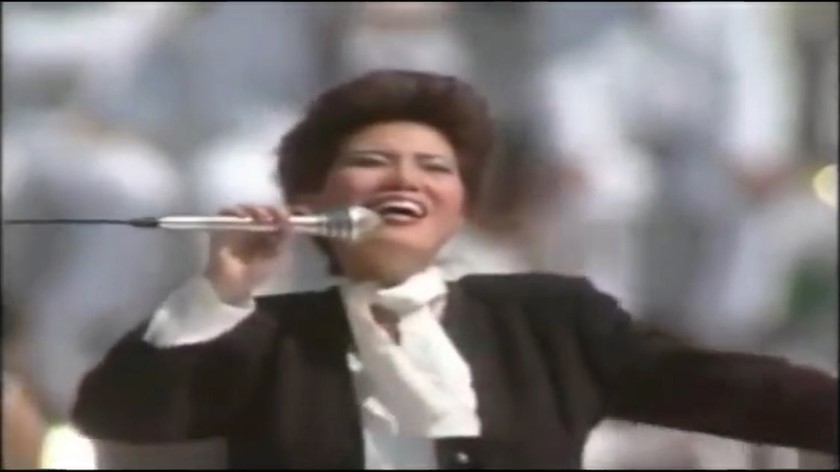Back to the Future at MMCA Seoul highlights Korean art at the end of the twentieth century
Spare a thought for every curator tasked with organising a coherent exhibition out of art that a museum has recently added to its collection. The recent-acquisitions show gets even trickier to do when the institution’s budget for purchases is modest and when there are not juicy tax breaks to encourage collectors to donate treasures: the state of play for the National Museum of Modern and Contemporary Art (MMCA).
Reading the pamphlet that accompanies the MMCA’s current entry in this genre, which covers additions it made from 2018 through 2022, you get the sense that the curators are struggling to come up with a legitimate conceit for what they have to work with. The text explains that ‘a large number’ of the acquisitions are by ‘artists who demonstrate the contemporaneity of Korean contemporary art’ – a fairly capacious premise for a show, but particularly one at a place with contemporary in its name. And ‘while the chronological emphasis may be on the 1990s’ here, as the text says a bit defensively, the roughly three dozen pieces span from the late 1980s into the deep 2010s. Some of the 20 or so artists did make pioneering work during the 90s – the great Choi Jeonghwa, for one, who is oddly represented by a more-recent effort – but others were still teenagers at the time.
And yet! Despite its built-in limitations and baggy theme, Back to the Future: An Exploration of Contemporaneity in Korean Contemporary Art is a surprisingly satisfying affair – even, at times, as crowd-pleasing as the film from which it takes its name. It has artists responding to seismic political and social developments that occurred as the twentieth century wound down, democracy emerged in Korea, the economy boomed and faltered, and digital technologies arrived – and it has artists looking back at those shifts, charting their reverberations into the present.
An Jungju sliced and diced the official songs for the 1988 and 1992 Summer Olympics – and footage from the Games (held respectively in Seoul and Barcelona) – into a 16-channel video installation entitled Hand in Hand with Amigos para Siempre (2016). An’s sharp, disjointed editing gives those celebrations of global comity a foreboding air, underscoring their artificiality and the disruption they can cause in a city. (The 1988 Games were a milestone for South Korea, the occasion for displacement-inducing construction and overdue reforms, like the lifting of an overnight curfew.)

Seo Hyun-Suk’s lucid feature-length documentary The Lost Voyage (2011–18) gazes even further back, to the 1960s and architect Kim Swoo-geun’s creation of Sewoon Sangga, an approximately kilometre-long residential and commercial complex in the heart of Seoul informed by Le Corbusier’s Unité d’Habitation, during the dictatorship of Park Chung-hee. (It was celebrated, then neglected, and is now a bit of a hipster destination, with craft beers on tap: nature taking its course.) President Park, one interviewee relays, liked to survey the capital from a helicopter as he mulled real-estate projects.
As it happens, an enormous 2018 painting on paper – about 4 by 4.5 metres – by Jung Jaeho provides a meticulous aerial view of the city from Sewoon Sangga, replete with tiny homes, old factories and sleek skyscrapers. Meanwhile, Kim Beom is cruising the nearby Cheonggye highway in a short video from 1997, filming a taxi’s rearview mirror. A few years later, that once-modern elevated roadway would be ripped out to restore a stream that it had covered.
Evidence of quicksilver change – that cornerstone of contemporaneity – permeates the show. It is there in Bahc Yiso’s 2003 installation World’s Top Ten Tallest Structures in 2010, which presents rickety plasticine models of what its title promises, based on the artist’s research into construction plans. These grand structures already look outmoded. It is there, too, in the room devoted to Kong Sunghun, whose manifold creations include a punchy abstraction made of mass-produced window blinds, mysterious twilight paintings and a kind of satirical augmented-reality device comprising a motorcycle helmet and a kaleidoscope. As artists abandoned fixed commitments to mediums, Kong led the way in high style.
The mood is topsy-turvy but also joyous, even pleasantly unhinged, as artists toy with new technologies and modes of making. In a short 2002–03 video, Ham Yangah captures a film shoot where she was working as an art director as it all began to fall apart, disaster unfolding both in front of the movie camera and behind it. In a 1991 work, Untitled (Cooking Chicken), the aforementioned Kim Beom goes about drawing a chicken by following the instructions of TV chef Julia Child. He outlines a real chicken on paper and bastes it at one point with a brush. At the end, we see it emerging from a copier as Child cries, “And that, ladies and gentleman, is what broiled chicken should look like!”
Kim’s is a scrappy, improbable, winning little production. Something similar could be said of Back to the Future, which offers a very concise portrait of both contemporary Seoul and contemporary Korean art. It is necessarily incomplete, and it is curiously apolitical, but before too long there will no doubt be further attempts to historicise this period, via more robust shows – and, one hopes, many more museum acquisitions. This is a start.
Back to the Future: An Exploration of Contemporaneity in Korean Contemporary Art at MMCA, Seoul, 16 June 2023 – 26 May 2024
